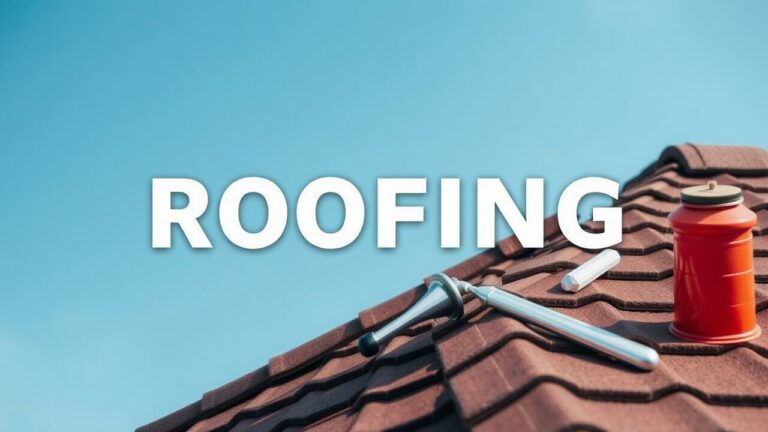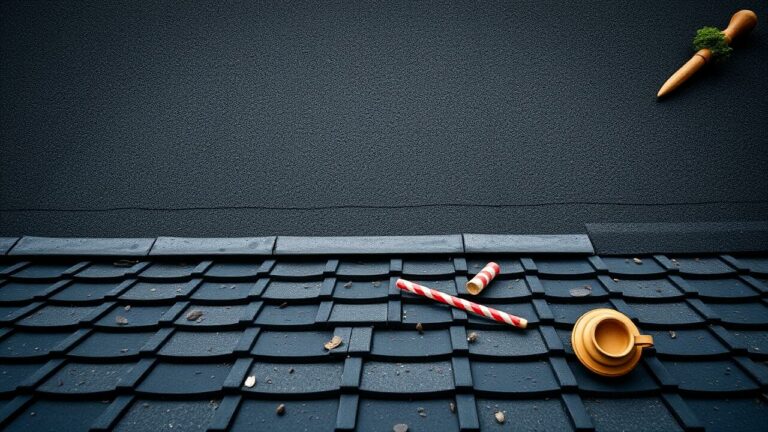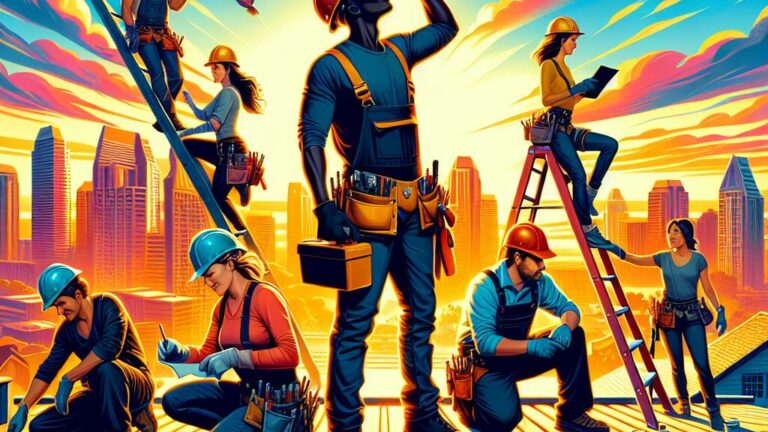History of Roofing Practices
Environmental Considerations in Roof Construction
When it comes to roof construction, environmental considerations play a crucial role in ensuring sustainable practices are followed. One important factor to consider is the material used in roofing. Opting for eco-friendly materials such as recycled metal, clay tiles, or sustainably sourced wood not only reduces the environmental impact but also promotes energy efficiency in buildings.
In addition to materials, the design and installation of roofs also impact the environment. Implementing proper insulation and ventilation can improve energy efficiency, leading to reduced energy consumption and lower carbon emissions. By incorporating green roofing techniques like vegetative roofs or reflective coatings, buildings can further contribute to environmental conservation efforts while also providing additional benefits such as improved air quality and urban heat island mitigation.
Sustainable Roofing Practices
Sustainable roofing practices have gained increasing importance in recent years as the construction industry continues to prioritize environmental considerations. The use of eco-friendly materials in roofing projects is becoming more prevalent, with materials such as recycled metal, sustainable wood, and green roofs growing in popularity. These materials not only reduce the environmental impact of roofing projects but also contribute to energy efficiency and cost savings in the long run.
In addition to materials, sustainable roofing practices also involve the design and installation of roofs with longevity and energy efficiency in mind. Proper insulation, ventilation, and water management systems are essential components of sustainable roofing projects. By adhering to sustainable practices, building owners can reduce their carbon footprint and contribute to a greener, more environmentally friendly future.
Importance of Proper Roof Maintenance
Proper roof maintenance is essential in ensuring the longevity and performance of a roof structure. Regular inspections and repairs help to identify and address any potential issues before they escalate into more significant problems. By staying proactive with maintenance, homeowners and building owners can save time and money in the long run.
Furthermore, proper roof maintenance also contributes to the overall safety of a building. A well-maintained roof can effectively protect the interior of a structure from water damage, mold growth, and other hazards. Neglecting roof maintenance can lead to leaks, structural damage, and even compromise the safety of the occupants. It is, therefore, crucial to establish a routine maintenance schedule to keep the roof in optimal condition.
Regular Inspections and Repairs
Regular inspections and repairs play a crucial role in maintaining the integrity and longevity of a roof. By conducting routine inspections, homeowners and building owners can identify potential issues early on, preventing costly damages in the future. Inspections should ideally be carried out at least once a year, with additional checks after severe weather events such as storms or heavy snowfall.
When it comes to repairs, addressing issues promptly is key to preventing further damage to the roof and the overall structure of the building. Whether it’s fixing small leaks, replacing damaged shingles, or resealing flashing, timely repairs can extend the lifespan of the roof and ensure that it continues to provide adequate protection against the elements. Hiring a professional roofing contractor for inspections and repairs is recommended to ensure that the work is done correctly and that any underlying issues are properly addressed.
Future Trends in Roofing Industry
As technology continues to advance, the roofing industry is witnessing significant developments in the integration of solar roofing systems. Solar panels are being seamlessly incorporated into roofing materials, providing homeowners with sustainable energy solutions while enhancing the overall aesthetics of their properties. This trend not only promotes environmental conservation but also offers long-term cost savings for consumers.
Another emerging trend in the roofing industry is the increased focus on enhancing energy efficiency through innovative materials and designs. Roofing manufacturers are investing in research and development to create materials that improve insulation, reduce heat absorption, and increase overall energy efficiency of buildings. By incorporating these advancements, property owners can minimize their carbon footprint and enjoy lower energy bills, making sustainable roofing practices a key consideration for the future.
Integration of Solar Roofing Systems
As the world progresses towards more sustainable practices, the roofing industry has seen a significant shift towards the integration of solar roofing systems. These systems are designed to harness the abundant energy from the sun and convert it into usable electricity for homes and buildings. By incorporating solar panels directly into roofing materials, property owners can reduce their reliance on traditional energy sources, lower their utility bills, and decrease their carbon footprint.
Solar roofing systems have become increasingly popular due to advancements in technology making them more efficient and cost-effective. In addition to the environmental benefits, these systems can also increase the value of a property and provide long-term savings on energy costs. As the demand for sustainable building practices continues to rise, the integration of solar roofing systems is expected to become a standard feature in the construction industry, revolutionizing the way we think about roofs and energy consumption.
Roofing Regulations and Standards
Roofing regulations and standards play a crucial role in ensuring the safety, durability, and quality of roofs installed on buildings. These regulations are typically set by local, state, and national authorities to establish minimum requirements for roof construction, materials, and installation methods. Compliance with these standards is essential to prevent structural failures, leaks, and other potential problems that could arise from substandard roofing practices.
Building codes and permit requirements also fall under the umbrella of roofing regulations and standards. Building codes dictate the specific criteria that must be met when constructing a new roof or making significant repairs to an existing one. Permits are often required to ensure that the work being done aligns with these codes and that the appropriate inspections are conducted to verify compliance. By adhering to these regulations and obtaining the necessary permits, property owners can be confident that their roofs are built to withstand the elements and protect the occupants within the building.
Building Codes and Permit Requirements
Building codes and permit requirements play a crucial role in the roofing industry by ensuring that roofs are constructed and maintained to meet specific standards for safety and quality. These regulations vary from state to state and city to city, outlining the necessary guidelines that must be followed when installing a new roof or making repairs to an existing one. Failure to comply with these codes can result in fines, delays in construction projects, and even potential risks to the occupants of the building.
Permits are typically required for any significant roofing work, such as replacing a roof, adding new layers, or making structural changes. The permit process involves submitting detailed plans of the proposed work to the local building department for review and approval. Inspections are often conducted at various stages of the project to ensure that the work is being done correctly and in accordance with the approved plans. Overall, adherence to building codes and permit requirements is essential in maintaining the structural integrity and safety of buildings for the well-being of occupants and the community at large.
FAQS
What are some environmental considerations to keep in mind when constructing a roof?
When constructing a roof, it is important to consider using materials that are sustainable, recyclable, and energy-efficient to reduce the environmental impact.
Why is proper roof maintenance important?
Proper roof maintenance is important to extend the lifespan of the roof, prevent costly repairs, and ensure the safety and structural integrity of the building.
What are some future trends in the roofing industry?
One of the future trends in the roofing industry is the integration of solar roofing systems to harness renewable energy and increase energy efficiency in buildings.
What roofing regulations and standards should be followed?
Roofing regulations and standards, including building codes and permit requirements, should be followed to ensure the safety, quality, and compliance of roofing practices with local laws and regulations.
How often should roofs be inspected and repaired?
Roofs should be inspected at least twice a year, ideally in the spring and fall, and any necessary repairs should be promptly addressed to prevent further damage and maintain the roof’s performance.







